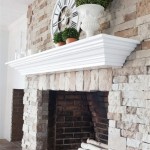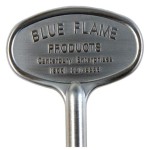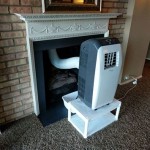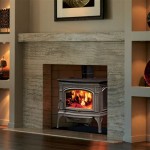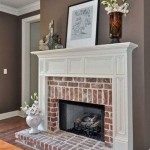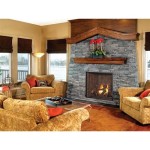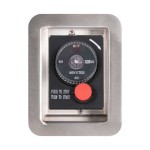```html
Fixing a Gas Fireplace Leak: A Comprehensive Guide
Gas fireplaces offer a convenient and aesthetically pleasing way to heat a home. However, gas leaks, even small ones, present a serious safety hazard. Addressing a gas leak promptly and effectively is crucial to protect property and occupants. This article provides a detailed guide to understanding, identifying, and rectifying gas leaks in a gas fireplace.
Recognizing the Signs of a Gas Leak
The first step in addressing a gas leak is recognizing its presence. Propane and natural gas, in their pure form, are odorless. Utility companies add a chemical odorant, typically mercaptan, which smells like rotten eggs, to make leaks readily detectable. While this added scent is the most common indicator, other signs may suggest a gas leak in or around a gas fireplace.
The most obvious indicator is, of course, the smell of rotten eggs. This scent should never be ignored. Even a faint odor warrants immediate investigation. Do not dismiss the smell as something else until the possibility of a gas leak has been definitively ruled out. If the odor is strong, immediate evacuation and professional assistance are required.
Another sign can be unusual hissing or whistling sounds emanating from the fireplace or gas lines. These noises may indicate gas escaping under pressure. Carefully listen near the fireplace and along the gas supply line for any unusual sounds. Pay particular attention to joints and connections, as these are common leak points.
Physical symptoms can also indicate a gas leak. Exposure to even low levels of natural gas can cause headaches, dizziness, nausea, fatigue, and even breathing difficulties. If occupants experience these symptoms, especially when near the fireplace, they should suspect a gas leak and take appropriate action. Evacuate the premises and seek medical attention if symptoms are severe.
Visible signs are less common but can occur. In some cases, a leak may cause bubbling in standing water near the gas line, or dead vegetation around buried gas pipes outside the house. While less likely inside, observe the area around the fireplace for any unusual signs.
Identifying the Source of the Leak
Once a gas leak is suspected, locating the source is the next critical step. This requires a methodical approach and careful examination of the fireplace and related components. It's essential to remember that if the smell of gas is strong, or discomfort is present, attempting to locate the leak is not recommended. Evacuate immediately and contact a qualified professional.
Begin by visually inspecting the gas supply line that connects to the fireplace. Look for any signs of damage, such as dents, kinks, or corrosion. Pay close attention to the fittings and connections, as these are common points of failure. Use a flashlight to illuminate hard-to-see areas.
Next, inspect the valve and control assembly located near the fireplace. This assembly controls the flow of gas to the burner. Examine the valve body, connections, and control knobs for any signs of damage or leakage. Check the pilot light assembly as well, looking for any irregularities or damage.
A soapy water test can help identify small leaks. Mix a solution of dish soap and water in a spray bottle. Spray the solution onto the gas line connections, valve fittings, and other potential leak points. If a leak is present, bubbles will form at the point of escape. Observe the soapy water carefully for any signs of bubbling, even small bubbles.
The burner assembly should also be examined. Check for any cracks or damage to the burner tubes or ports. Debris or obstructions in the burner can also cause incomplete combustion, which may mimic a gas leak. Clean the burner assembly if necessary, following the manufacturer's instructions.
The gas fireplace itself can sometimes be the source of a leak. Check the housing and glass door for any cracks or loose seals. Inspect the flue and venting system to ensure it is properly sealed and free of obstructions. A poorly vented fireplace can cause a buildup of gas, leading to a perceived leak.
Steps to Fix a Gas Fireplace Leak
Fixing a gas fireplace leak requires a systematic approach. Depending on the severity and location of the leak, some repairs can be performed by homeowners with appropriate skills and experience. However, for more complex or significant leaks, professional assistance is strongly recommended. If unsure about any procedure, contacting a qualified gas technician is the only safe option.
Before starting any repair, ensure the gas supply to the fireplace is completely shut off. Locate the gas shut-off valve, usually located near the fireplace or at the main gas meter. Turn the valve to the "off" position to stop the flow of gas to the fireplace. Double-check that the gas is off by trying to light the pilot light. If it doesn't light, the gas is likely off. If the pilot light stays on with the shutoff valve turned off, call the gas company because the valve is likely not working correctly. This is a dangerous situation to ignore.
For loose fittings or connections, tightening the connection may resolve the leak. Use appropriate wrenches to carefully tighten the fittings. Avoid overtightening, as this can damage the threads and worsen the problem. After tightening, reapply the soapy water test to ensure the leak is gone.
Damaged gas lines or fittings may require replacement. Purchase replacement parts that are specifically designed for gas applications and are compatible with the fireplace. When replacing a gas line, use pipe thread sealant (gas-rated) on the threads to ensure a tight seal. Carefully tighten the connections, avoiding overtightening.
If the leak is coming from the valve or control assembly, it may be necessary to replace the entire assembly. These components are complex, and attempting to repair them without specialized knowledge and tools can be dangerous. Purchase a replacement valve assembly that is compatible with the fireplace and follow the manufacturer's instructions for installation.
Cleaning the burner assembly can resolve issues caused by debris or obstructions. Remove the burner assembly and carefully clean the burner tubes and ports with a brush or vacuum cleaner. Ensure that all openings are clear and free of obstructions. Reinstall the burner assembly and test the fireplace.
If the leak is due to a crack in the fireplace housing or glass door, repair or replacement may be necessary. Small cracks can sometimes be repaired with high-temperature sealant. However, larger cracks or damage may require replacing the entire housing or door.
Ensure the flue and venting system are properly sealed and free of obstructions. Check for any gaps or cracks in the vent pipe and seal them with high-temperature sealant or aluminum tape. Remove any obstructions, such as bird nests or debris, from the vent opening.
After completing any repairs, perform a thorough leak test using the soapy water method. Check all connections and fittings for any signs of bubbling. If no leaks are detected, carefully turn the gas supply back on and relight the pilot light, following the manufacturer's instructions.
Monitor the fireplace closely after repairs to ensure the leak is resolved and the fireplace is operating safely. If any signs of a gas leak reappear, shut off the gas supply immediately and contact a qualified gas technician.
Regular maintenance can help prevent gas leaks. Inspect the fireplace annually for any signs of damage or wear. Clean the burner assembly and venting system regularly. Schedule professional inspections to identify and address potential problems before they become serious.
```
Fireplace Gas Valve Leaking Here S How To Test It

Gas Fireplace Leak How To Detect And What Do Dreifuss Fireplaces

What You Should Know About Gas Fireplace Maintenance

Reasons Your Gas Fireplace Isn T Working Experts

Gas Fireplace Leak Symptoms What To Watch Out For Dreifuss Fireplaces

Gas Fireplace Service In Winchester Tn Is Your Leaking

Fireplace Gas Valve Leaking Here S How To Test It

Why Is It Important To Get My Gas Fireplace Logs Clean Regularly

Common Gas Fireplace Problems And Repair With S

Gas Fireplace Leak Symptoms What To Watch Out For Dreifuss Fireplaces
Related Posts

